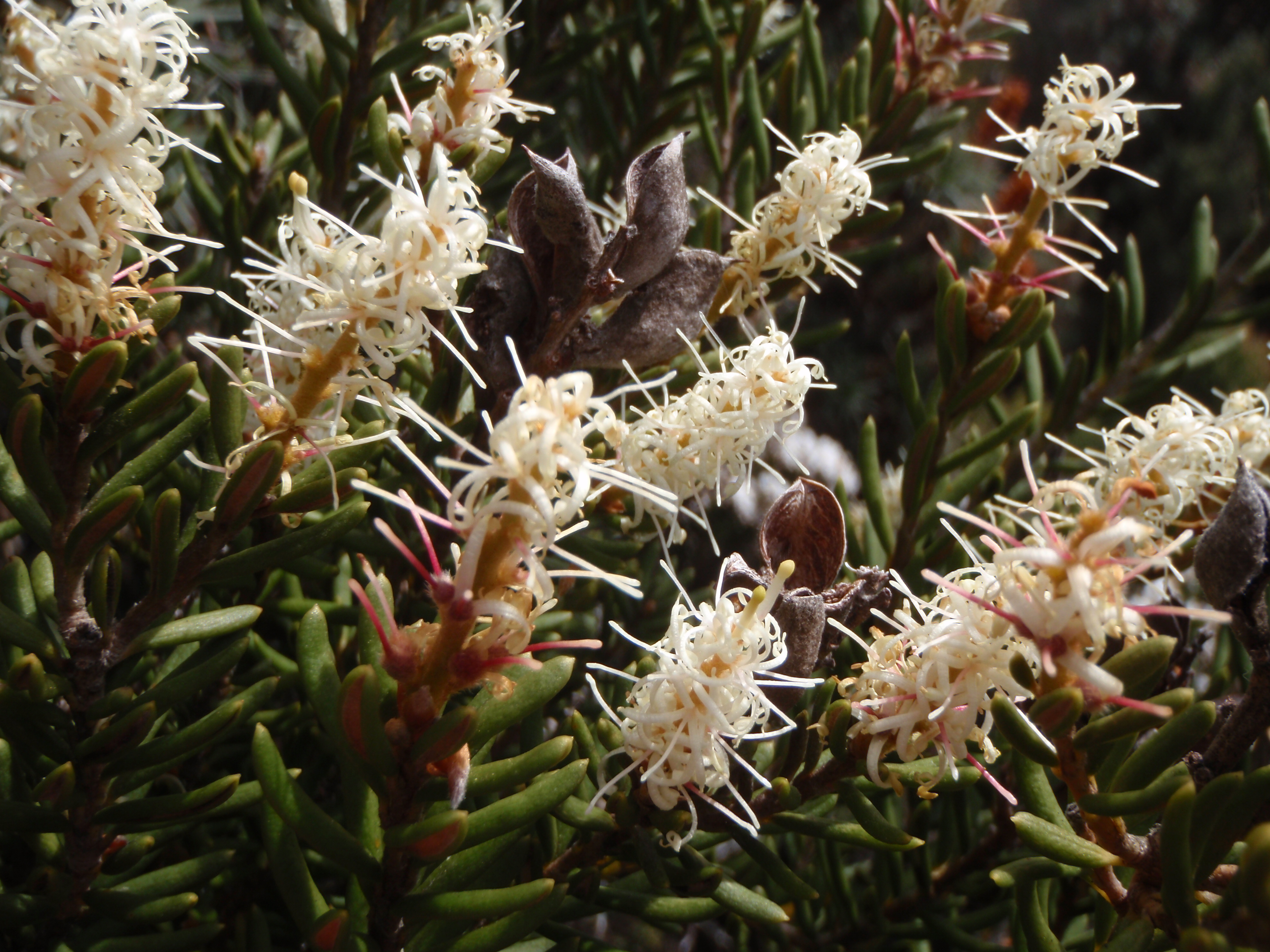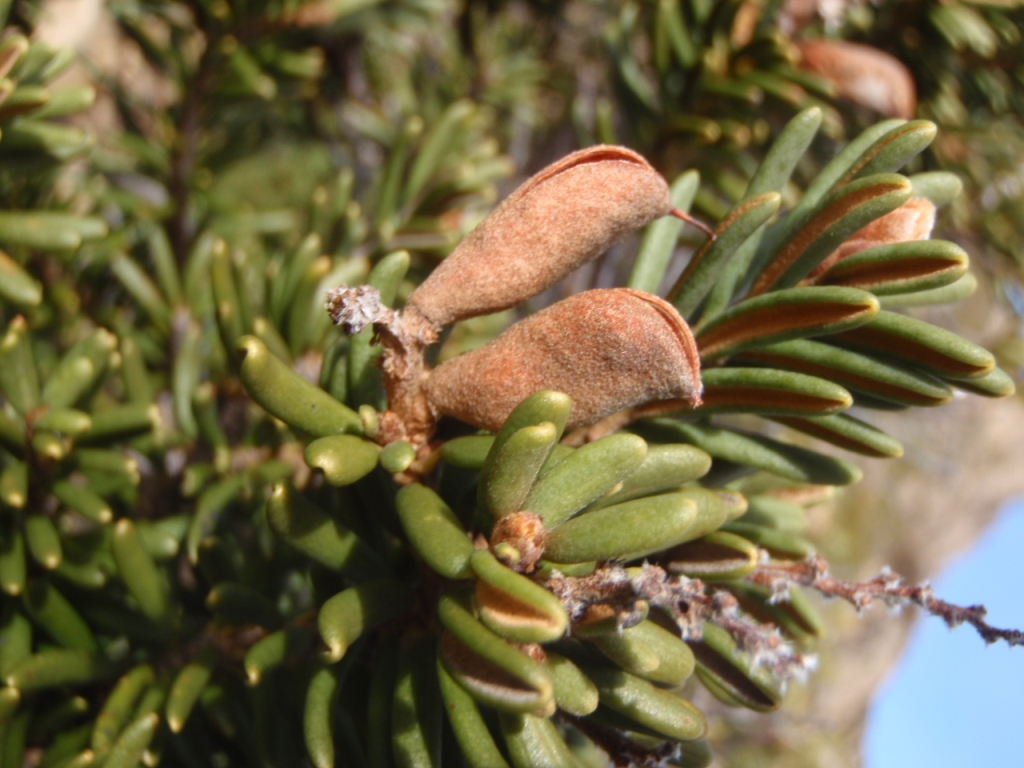Scientific Name: Orites revolutus Endemic Having a natural distribution confined to a particular geographic region
Common Name: revolute orites
Family Classification (Clade): Eudicots
Family: Proteaceae
Form Description: Much-branched, erect or spreading shrub. In the open, sprawls over ground or rocks.
Height (m): 0.5 – 2
Flowers: Creamy-white, grouped into short candles.
Fruit: Woody seed follicle – short, blunt, covered with dense brown hair. Seed has a large terminal wing.
Municipality
Plant Communities
Habitat Notes
Abundant and widespread on mountain plateaux. Extends down into sub-alpine woodland as a larger shrub.
Site Tolerance
Exposed, Moist, Rocky, Windy
Soil Tolerance
Clay, Fertile, Nutrient-poor, Well-drained
Frost Tolerance
Hardy
General Notes
Would make an interesting garden plant with its distinct leaves and mass flowering.
Propagation Calendar
-
Flowering Month
Jan Feb Mar Apr May Jun Jul Aug Sep Oct Nov Dec -
Seed Collecting Month
Jan Feb Mar Apr May Jun Jul Aug Sep Oct Nov Dec -
Sowing Month
Jan Feb Mar Apr May Jun Jul Aug Sep Oct Nov Dec -
Cutting Month
Jan Feb Mar Apr May Jun Jul Aug Sep Oct Nov Dec
Propagation Method
Seed Information
Seed Collection
Follicles open and release seed immediately on ripening – can be collected once the follicle starts to turn from green to brown. Seeds may easily be collected in autumn.
Seed Treatment Method
Standard Scatter seed thinly on to damp potting mix. Hold seed in place by covering with more potting mix to approximately the depth of the seed size.
Seed Treatment Notes
Seedlings very slow to grow on.

